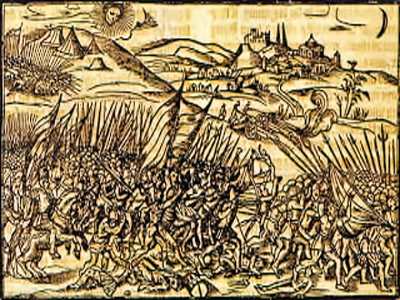Throughout history, mankind has faced numerous challenges, from wars to natural disasters, but one of the most perplexing and deadly threats came in the form of the English Sweating Sickness. This strange epidemic not only claimed countless lives but also played a pivotal role in shaping English history.
Let’s delve into the origins, symptoms, and impact of this mysterious illness that struck England during the late 15th and early 16th centuries.
The First Outbreak: A Historical Context
The English Sweating Sickness first emerged in August 1485, shortly after Henry Tudor’s forces invaded England. Henry, who would later become King Henry VII, landed in Wales with a small army and quickly gathered support, ultimately defeating King Richard III at the Battle of Bosworth Field. This victory marked the end of the Wars of the Roses and the beginning of the Tudor dynasty.

As Henry’s army marched towards London, they were struck by a sudden and deadly illness. The Sweating Sickness manifested with alarming speed: individuals who were previously healthy experienced stomach cramps, headaches, and lethargy, followed by a high fever and profuse sweating. The mortality rate was staggering, with reports suggesting that 99 out of 100 infected individuals succumbed to the disease within hours.
The Spread of the Disease
By September 1485, the Sweating Sickness had reached London, where it wreaked havoc for a month. Chroniclers of the time described the epidemic as claiming “infinite persons” and “many thousands.” Unlike the Plague or other known diseases, the Sweating Sickness did not confer immunity upon recovery, leading to repeated outbreaks and widespread fear.

As people fled to the countryside in hopes of escaping the illness, they inadvertently spread it further. The disease seemed to vanish as quickly as it had appeared, leaving behind a trail of devastation and confusion. Speculation about its origins ran rampant, with theories ranging from the influence of French mercenaries to environmental factors like the rainy summers of the early 1480s.
The Death of Prince Arthur
The Sweating Sickness reemerged in 1502, claiming the life of Prince Arthur, the eldest son of King Henry VII. Arthur had recently married Catherine of Aragon, and his untimely death from the illness had significant implications for the Tudor dynasty. His younger brother, Henry, who would later become King Henry VIII, was thrust into the position of heir, altering the course of English history.

Henry’s marriage to Catherine, intended to solidify an alliance with Spain, became a source of turmoil when she failed to produce a male heir. This led to Henry’s infamous split from the Catholic Church and the establishment of the Church of England, a monumental shift in religious and political power.
Subsequent Outbreaks and Their Impact
The Sweating Sickness did not disappear after the death of Prince Arthur. A second outbreak occurred in 1507, but it was less severe, attributed to advancements in medical treatments. However, the third outbreak in 1517 was devastating, with reports indicating that up to half the population in some areas perished within hours of infection. The rapid onset of symptoms, including shivering, nausea, and intense sweating, left communities in chaos.

The epidemic affected all social classes, with scholars at prestigious institutions like Oxford and Cambridge succumbing to the illness, stalling the progress of the English Renaissance. The King and his court moved around the country in a desperate attempt to avoid the disease, but it continued to spread.
The Final Outbreaks
The fourth outbreak in 1528 was even more catastrophic, beginning in London and spreading rapidly across Europe. Reports indicated that healthy individuals could die within five hours of exposure. The disease swept through the Baltic region, decimating populations in Norway, Denmark, and Sweden, with some areas experiencing daily death tolls in the hundreds.

The final outbreak occurred in 1551, starting in Shrewsbury and resulting in panic and social disorder. Eyewitness accounts described the chaos as “depopulation,” with people fleeing to neighboring countries, although the disease did not seem to affect the local populations.
Understanding the Sweating Sickness
Despite extensive historical documentation, the true cause of the Sweating Sickness remains a mystery. Some historians and medical experts speculate that it may have been a strain of a pulmonary hantavirus, transmitted from person to person rather than through rodent carriers. The lack of definitive evidence has left the disease shrouded in uncertainty.

John Caius, an Elizabethan physician, provided one of the most detailed accounts of the illness in his work, “A Boke or Counseill Against the Disease Commonly Called the Sweate, or Sweatyng Sicknesse.” His observations of the symptoms and progression of the disease offer valuable insights into its nature, although they do not provide a clear explanation for its origins.
Conclusion
The English Sweating Sickness was a remarkable and terrifying chapter in the annals of medical history. Its sudden appearances and devastating effects not only claimed countless lives but also influenced the course of English politics and society. While the disease has not been seen since the 16th century, its legacy endures as a reminder of the fragility of human life and the mysteries that still surround historical epidemics.
Understanding the Sweating Sickness is crucial for appreciating the complexities of our past and the ongoing challenges posed by infectious diseases.

